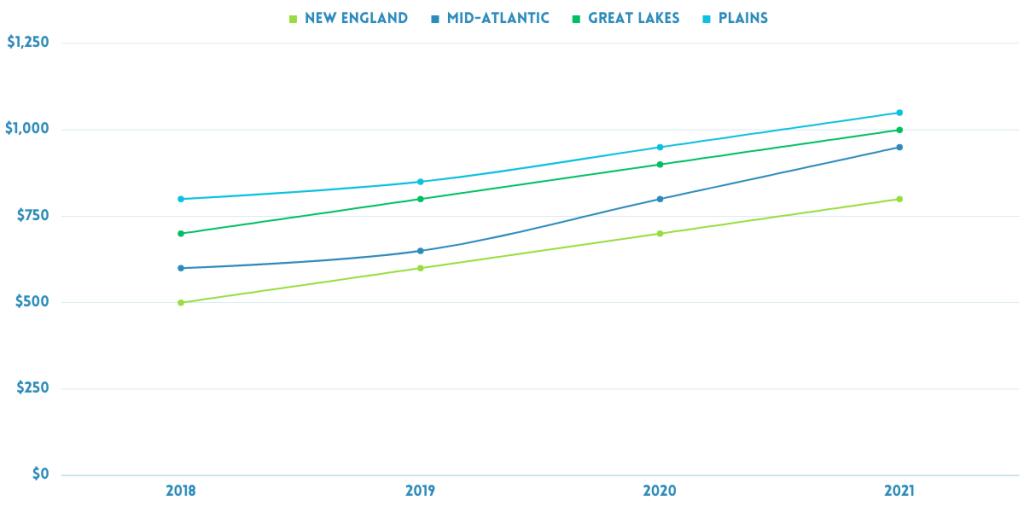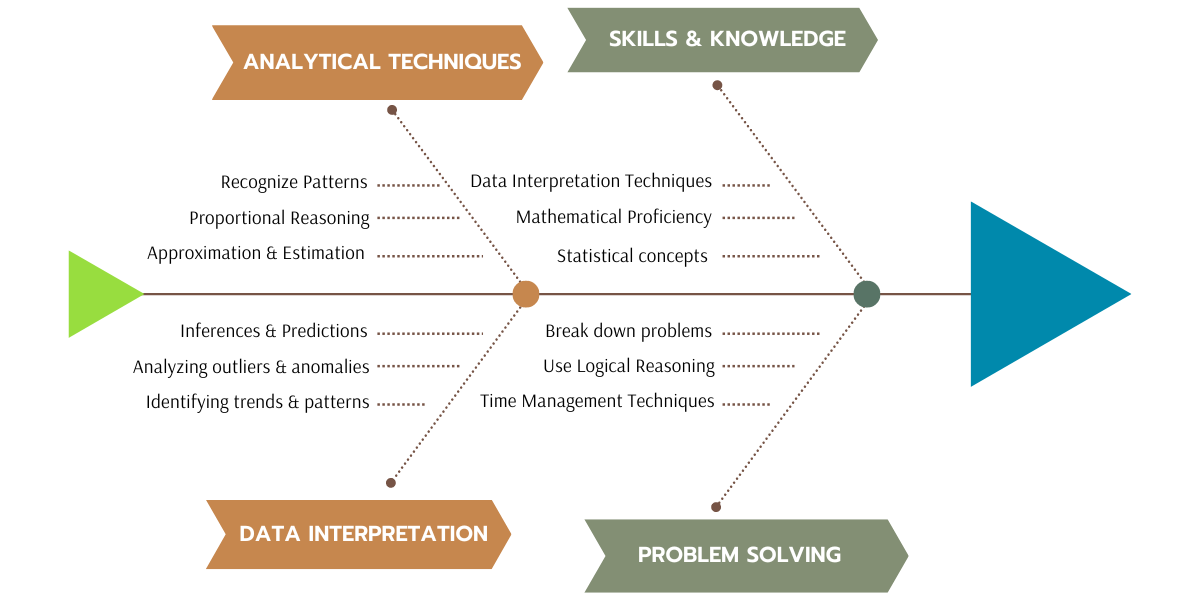Conquer the SHL Numerical Reasoning Test (2025) - Free Practice Test & Ultimate Prep Course
- Overview
- Curriculum
- Reviews
Numerical Reasoning is a part of the SHL cognitive assessments – two words that can unlock a myriad of opportunities in careers like finance, engineering, data analysis, and marketing. It’s more than just being good with numbers; it’s about interpreting data, understanding patterns, and making informed decisions. This ability to reason with numbers is what SHL’s Numerical Reasoning and Numerical Calculation assessments test.
Many organizations rely on SHL assessments for their hiring processes to measure an individual’s potential job performance in a holistic way. The Numerical Reasoning section in the SHL test presents you with statistical tables and data in graphical forms, asking questions that need to be answered within a time limit. It’s not just a test of your numeracy, but also of your decision-making skills under pressure. There is another similar module in the SHL called the Numerical Calculation assessment that evaluates your arithmetic and computation abilities – essential skills in many roles requiring precise and speedy calculations.
But fear not! This practice test gives you a chance to practice for the SHL’s Numerical Reasoning assessments without paying anything. And to give you an even fuller picture, we’ve briefly covered the Numerical Calculations too. These practice tests emulate the actual assessments and serve as a valuable tool to acquaint yourself with the question types, enhance your numerical reasoning abilities, and build confidence in preparation for the real assessments.

Rapid SHL Masterclass
Last Updated: Jan 31, 2025
Course Content
-
1Intro and Strategy 2 stepsBuy this Course: Get full access to all lessons, practice tests and guides.
-
2SHL Numerical Reasoning Test 9 stepsBuy this Course: Get full access to all lessons, practice tests and guides.
- SHL Numerical Reasoning
- Numerical Reasoning Strategies
- Basic Arithmetic Operations - Written Guide
- Decimals, Fractions & Conversions - Written Guide
- Percentages, Ratios & Proportions - Written Guide
- SHL Numerical Reasoning Practice Quiz – 1
- SHL Numerical Reasoning Practice Quiz – 2
- SHL Numerical Reasoning Practice Quiz – 3
- SHL Numerical Reasoning Practice Quiz – 4
-
3SHL Numerical Calculation Test 3 StepsBuy this Course: Get full access to all lessons, practice tests and guides.
-
4SHL Inductive Reasoning Test 7 stepsBuy this Course: Get full access to all lessons, practice tests and guides.
-
5SHL Deductive Reasoning Test 3 StepsBuy this Course: Get full access to all lessons, practice tests and guides.
-
6SHL General Ability (Verify G+) Test 3 StepsBuy this Course: Get full access to all lessons, practice tests and guides.
-
7SHL Verbal Reasoning Test 9 stepsBuy this Course: Get full access to all lessons, practice tests and guides.
-
8SHL Spatial Reasoning Test 3 stepsBuy this Course: Get full access to all lessons, practice tests and guides.
-
9SHL Mechanical Comprehension Test 15 stepsBuy this Course: Get full access to all lessons, practice tests and guides.
- SHL Mechanical Comprehension Test
- Gears - Written Guide
- Force & Torque - Written Guide
- Tools & Equipments - Written Guide
- Fluid Mechanics - Written Guide
- Wheels and Belts - Written Guide
- PRESSURE - Written Guide
- MAGNETISM - Written Guide
- Gears - Video Guide
- Wheels & Belts - Video Guide
- SHL Gears Practice Questions
- SHL Wheels & Belts Practice Questions
- SHL Pressure Practice Questions
- SHL Magnetism Practice Questions
- SHL – Mechanical Comprehension Practice Questions
-
10SHL Personality Test 5 stepsBuy this Course: Get full access to all lessons, practice tests and guides.
-
11SHL Situational Judgement Test 4 StepBuy this Course: Get full access to all lessons, practice tests and guides.
-
12SHL Verify Interactive Tests 4 stepsBuy this Course: Get full access to all lessons, practice tests and guides.
-
13SHL Full Practice Test 3 stepsBuy this Course: Get full access to all lessons, practice tests and guides.
-
14SHL Checking Tests 6 stepsBuy this Course: Get full access to all lessons, practice tests and guides.
-
15BONUS Interview Prep Video Guide 1 stepsBuy this Course: Get full access to all lessons, practice tests and guides.
Start Practicing for the SHL Numerical Reasoning Test [Free]
Success Stories
4.4 882 Reviews
rob, 16 Jan
Solid review course that covers the…
Solid review course that covers the relevant topics in good detail
chad, 11 Jan
Great Program, amazing practice simulations
Easy to understand. Passed tests on first time thru.
QUEEN RIGHTEOUS, 07 Jan
Highly recommended.Great instructional…
Highly recommended.Great instructional information. I passed on the first try.
Rehan Ali, 06 Jan
The SHL Assessment was very helpful
The SHL Assessment was very helpful. The layout was great and everything was explained good. I passed the test and secured the job. My wife got me this course thanks to her and prepterminal 🙂
Mario Pacini, 21 Dec
I did the SHL Assessment prep and…
I did the SHL Assessment prep and managed to get comfortable with the test in less than 24hrs. Highly recommend this test.
Annonymous, 18 Dec
Course helped me pass SHL exam
Course helped me pass SHL exam. Highly recomended.
What is Numerical Reasoning and Why Employers Highly Value It
Numerical reasoning is the ability to interpret and analyze numerical data, drawing logical conclusions and making informed decisions. It involves working with numbers, calculations, and data interpretation, often under time constraints. Employers highly value these skills across different industries and roles because they demonstrate analytical thinking, problem-solving abilities, attention to detail, and the capability to handle complex numerical information.
Numerical Reasoning tests in SHL assessments evaluate a candidate’s proficiency in interpreting and analyzing numerical data. They are crucial for assessing aptitude with numbers and suitability for various positions.
Here’s why Numerical Reasoning tests hold such significance:
Data Interpretation Skills: In the current data-driven business landscape, having strong data interpretation skills is essential. For example, being able to analyze sales figures, market trends, and financial statements empowers employers to evaluate your competence in understanding numerical information.
Analytical Thinking: Requires you to apply logical and critical thinking to solve problems efficiently. These tests present challenging scenarios that assess your ability to identify patterns, recognize trends, and perform accurate calculations within time constraints. For instance, imagine a scenario where you are given a set of sales data and asked to identify the factors influencing fluctuations in revenue. Numerical Reasoning tests assess your ability to think analytically and make informed decisions based on numerical information, reflecting your aptitude for problem-solving in such real-world situations which in turn is very helpful for employers.
Critical Decision-Making: Effective decision-making is essential in a professional setting.
For instance, consider a business manager who needs to evaluate the financial feasibility of a new product launch. They must analyze cost projections, revenue forecasts, and market trends to make an informed decision.Numerical Reasoning tests evaluate your ability to make informed judgments based on numerical data.
Attention to Detail: In finance, accounting, and other data-centric roles, precision is vital when working with numerical information. Numerical Reasoning tests gauge your attention to detail by assessing your ability to identify errors, extract relevant information, and avoid common pitfalls.
Performance Under Pressure: Numerical Reasoning tests are often timed, simulating real-world scenarios where professionals must work efficiently under pressure. By assessing your performance within strict time limits, these tests demonstrate your ability to maintain composure, manage time effectively, and deliver accurate results even when faced with tight deadlines.
Predictive Validity: Extensive research has shown that Numerical Reasoning tests have high predictive validity. This means that individuals who perform well in these tests are more likely to succeed in job roles that require numerical proficiency, problem-solving, and data analysis.
Types Of Questions In The SHL Numerical Reasoning
The SHL Numerical Reasoning test comes in two versions: interactive and non-interactive. In the interactive version, you’ll be faced with questions that require you to interpret information, perform numerical calculations, and graphically represent data. The non-interactive version also includes similar types of tasks that challenge your numerical thinking abilities. It’s important to have a solid understanding of currencies and numbers to succeed in this test.
When it comes to the interactive questions, you’ll need to actively engage with the screen by using actions like drag-and-drop. It’s crucial to carefully read and follow the instructions for each question since all of them are mandatory and cannot be skipped. Getting stuck on a single question can eat up valuable time, so it’s important to approach the questions efficiently.
Both versions of the test assess your ability to comprehend numerical information, apply mathematical calculations, and effectively present data. To perform at your best, take a focused approach to each question, utilize the necessary actions on the screen, and leverage your numerical reasoning skills to arrive at accurate solutions.
Now, let’s explore a sample question from the Numerical Reasoning test.
Numerical Reasoning Sample Question 1
| Year | Stock Price (Beginning) | Stock Price (End) | Dividend per share | Earnings per Share |
|---|---|---|---|---|
| 2018 | $50 | $60 | $2.50 | $4.00 |
| 2019 | $60 | $75 | $3.00 | $4.50 |
| 2020 | $75 | $90 | $3.50 | $5.00 |
| 2021 | $90 | $110 | $4.00 | $6.00 |
Based on the data provided in the table, which year showed the highest growth rate in the earnings per share for Company XYZ?
-
A:
2018
-
B:
2019
-
C:
2020
-
D:
2021
Explanation:
To determine the highest growth rate in earnings per share, we compare the values from year to year. In this case, the earnings per share increased from $4.00 in 2018 to $6.00 in 2021, representing a growth rate of $2.00 per share over a four-year period. Among the given options, 2021 had the highest growth rate in earnings per share.
-
A:
2018
-
B:
2019
-
C:
2020
-
D:
2021
Explanation:
To determine the best overall return for an investor, we need to consider both the stock price appreciation and dividend payouts.
In 2021(Option D), the stock price increased from $90 to $110, indicating a gain of $20 per share. The dividend payout was $4.00 per share. Thus, the total return would be $24.00 per share ($20 from stock price appreciation + $4.00 from dividends).
Numerical Reasoning Sample Question 2

-
A:
New England
-
B:
Mid-Atlantic
-
C:
Great Lakes
-
D:
Plains
Explanation: To determine the region with the highest percentage increase in sales, we compare the sales figures from 2018 to 2021. The sales in the Great Lakes region increased from $700 to $1000, resulting in a percentage increase of [(1000-700)/700] * 100 = 42.86%. This is the highest increase among the given regions ABC and D.
-
A:
2018
-
B:
2019
-
C:
2020
-
D:
2021
Explanation: By analyzing the sales data, we can observe that in 2021, the Mid-Atlantic region had the highest sales compared to the other regions (New England, Great Lakes, and Plains). In that year, the sales in the Mid-Atlantic region reached $950, surpassing the sales in the other regions ABC and D. This indicates the peak sales performance for the Mid-Atlantic region among the given years and regions.
How Our Free Practice Tests Can Help
We understand the real challenges that test-takers face when preparing for Numerical Reasoning assessments. ese include managing time effectively, interpreting complex data accurately, and handling the pressure of solving problems within strict time constraints. These tests demand the ability to swiftly analyze and draw conclusions from numerical information. Without adequate preparation and practice, these challenges can be daunting and hinder performance. However, by using our practice tests, you can refine your time management skills, enhance your ability to interpret complex data accurately, and develop strategies to handle the pressure effectively.
Our practice tests provide an opportunity to sharpen your numerical analysis and problem-solving abilities. Upon completion of the test, you will receive a score that gives you a clear indication of your current proficiency. By taking this test you get an understanding where you stand, you can identify areas for improvement and focus your efforts on enhancing your skills.
Improve Your Score With Our SHL Course
In our course we offer a comprehensive question bank that covers both the interactive and non-interactive versions of the SHL Numerical Reasoning test. You’ll have the opportunity to practice interpreting data, performing calculations, and presenting information graphically, honing the skills necessary to excel in the test.
At PrepTerminal, we understand the challenges that test-takers face when it comes to time management, accurate data interpretation, and handling pressure within tight time constraints. Our SHL Course is specifically tailored to help you overcome these challenges and achieve a higher score. Through our practice tests, you’ll refine your time management skills, improve your accuracy in interpreting complex data, and develop effective strategies for dealing with pressure.
Our course goes beyond just practice questions. We provide comprehensive coverage of various topics and difficulty levels, ensuring that you are well-prepared for any type of question you may encounter in the test. Whether it’s interactive or non-interactive questions, our course equips you with the necessary skills to succeed.
Enroll in our prep course today and take your numerical reasoning abilities to the next level. Gain confidence, improve your performance, and maximize your chances of success in the SHL Numerical Reasoning test.
How to Solve Numerical Reasoning Questions Quickly
Numerical reasoning can be challenging, no denying! We’ve got some exceptional tricks up our sleeve to assist you in analyzing data, thinking logically, and swiftly crunching numbers to conquer those numerical reasoning questions.

Identify patterns and trends: Look for recurring patterns or trends in the data. This can help you identify relationships and make predictions about future values. For example, if you notice that sales revenue increases steadily over time, you can anticipate higher revenue in the coming months.
Imagine you are analyzing the monthly sales data for a retail store. Here is the sales data for the past six months:
Month Sales
January – $80,000
February – $85,000
March – $90,000
April – $95,000
May – $100,000
June – $105,000
By examining this data, you can look for patterns or trends that will help you make predictions about future sales.
In this case, you can see that the sales revenue consistently increases by $5,000 each month. This indicates a steady upward trend. Based on this pattern, you can anticipate that the sales revenue for the upcoming months will continue to increase by $5,000 each month.
Using this trick, you can make predictions about future sales based on the observed pattern or trend. For example, if you are asked to estimate the sales revenue for July, you can add $5,000 to the sales revenue of June. In this case, the estimated sales revenue for July would be $110,000.
So, identifying patterns and trends allows you to recognize relationships within the data and make informed predictions. This skill is valuable in numerical reasoning assessments as it demonstrates your ability to analyze data and apply logical reasoning to solve problems.
When facing numerical reasoning questions, utilize proportional reasoning to make comparisons and estimate changes based on percentages or ratios. Additionally, leverage shortcuts and approximations to simplify calculations, especially with large numbers. And remember, our comprehensive course offers even more valuable tricks to help you excel in solving these types of questions effortlessly.

Created by: Michael Lerner
BSc, Psychometric Tutor, Prepterminal Test Expert
5840 students, 4.4, 882 Reviews
Hey, welcome to our Rapid SHL Masterclass. I’m Michael, PrepTerminal’s SHL Rapid SHL Masterclass in-house expert. I am here to assist you with any queries about the Rapid SHL Masterclass. Don’t hesitate to contact me at [email protected].
